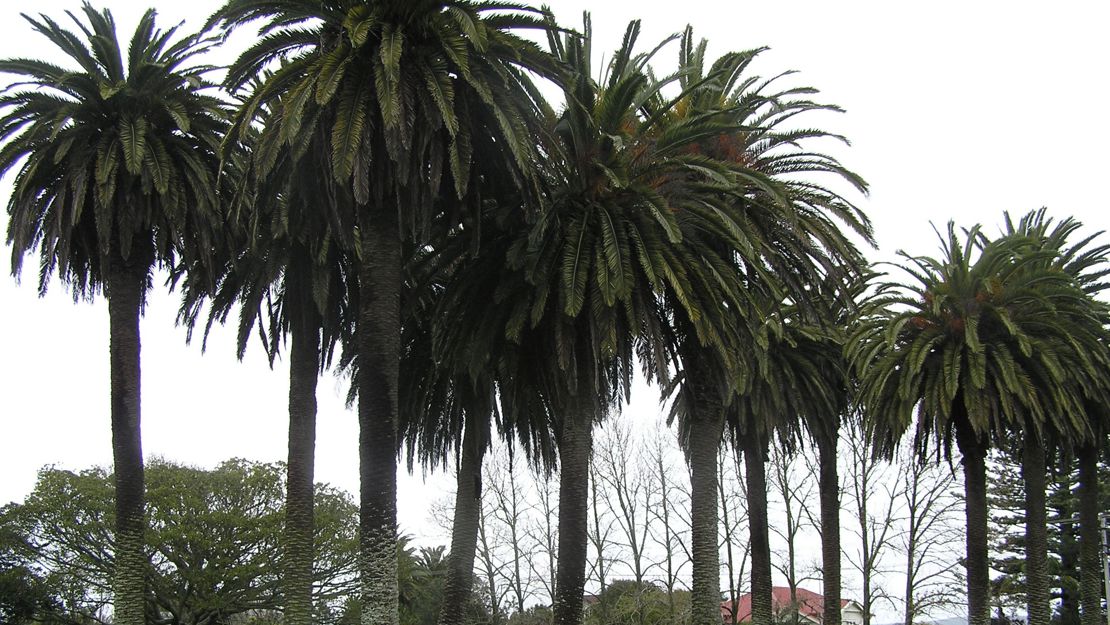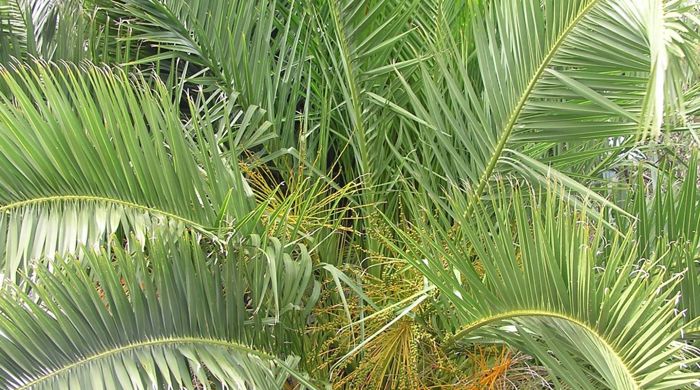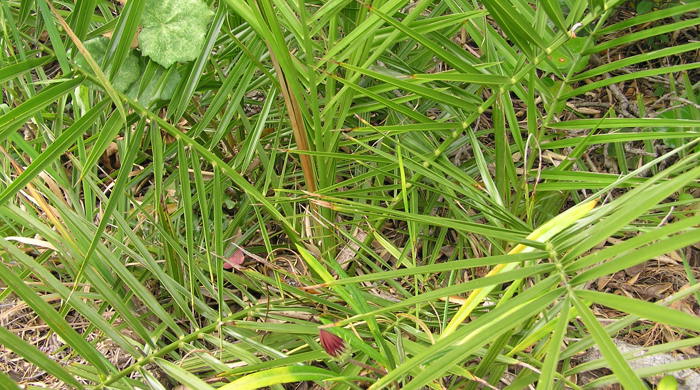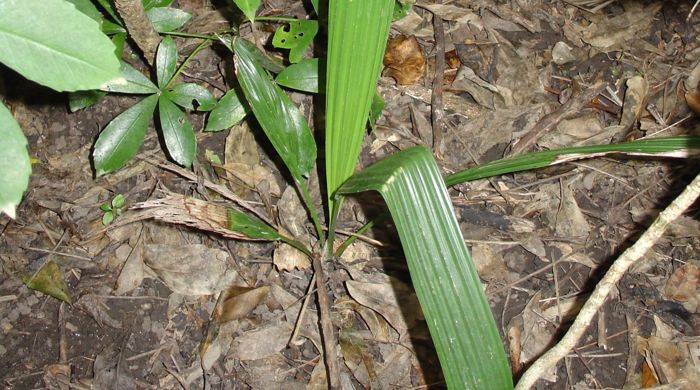Phoenix canariensis
Phoenix palm
Family: Aracaceae
Origin: Canary Islands

Regional Pest Management Plan (RPMP) status
- Hauraki Gulf Controlled Area Notice pest
- Parkland with Significant Ecological Areas — Site-led (on-park only)
- Waitākere Ranges Heritage Area priority status
- Whole region — Sustained control
General description
Stocky palm. Trunk is diamond-patterned from leaf scars. Leaf stalks have sharp spines. Leaves are large, segmented and held in terminal crown. Flowers are white/yellow and borne on a hanging stem in October – November. Berries are orange/yellow and borne on female plants in summer.
What you need to know
To help protect our environment:
- You must not breed, distribute, release or sell phoenix palm within the Auckland region.
- You must not plant phoenix palm within the Auckland region, unless you are transferring an existing plant on your land to another location within the boundaries of the same property.
- You must destroy any phoenix palm on land that you occupy if it has been planted in breach of the above rules and you are directed to do so by an authorised person.
Habitats
Forest, coastal cliffs, sand dunes, saline wetlands, roadsides, volcanic cones.
Dispersal
Seeds dispersed by birds, gravity, water and possibly rats. Human-mediated dispersal through deliberate plantings.
Impact on environment
Competitively excludes native vegetation. Facilitates invasive epiphytes and birds. Sharp spines on the leaves can cause severe injury.
Control
Site Management
Follow up treated areas 3 times per year. Encourage natural regeneration of native plants or replant treated areas where possible after 2-3 treatments to establish dense ground cover and minimise reinvasion.
Recommended approaches
Physical control
Method: Dig out.
Plant parts requiring disposal: Dig out seedlings with care to avoid any spines.
Disposal options: Remove to greenwaste or landfill if practical.
Biocontrol
Biocontrol is currently not available for this species.
Community agrichemical control recommendations
No qualifications: Cut stump and paste freshly cut base of seedlings with double strength glyphosate gel.
Certified Handler/Experienced agrichemical user: Foliar spray seedlings with 200ml glyphosate green per 10L of water and 20ml penetrant. Recommend all palms beyond seedling stage are controlled by a qualified arborist due to the severe injuries Phoenix palms can cause.
Safety notes
Sharp spine can piece through gloves and cause serious injuries.
Caution: When using any herbicide or pesticide please read the label thoroughly to ensure that all instructions and safety requirements are followed.






